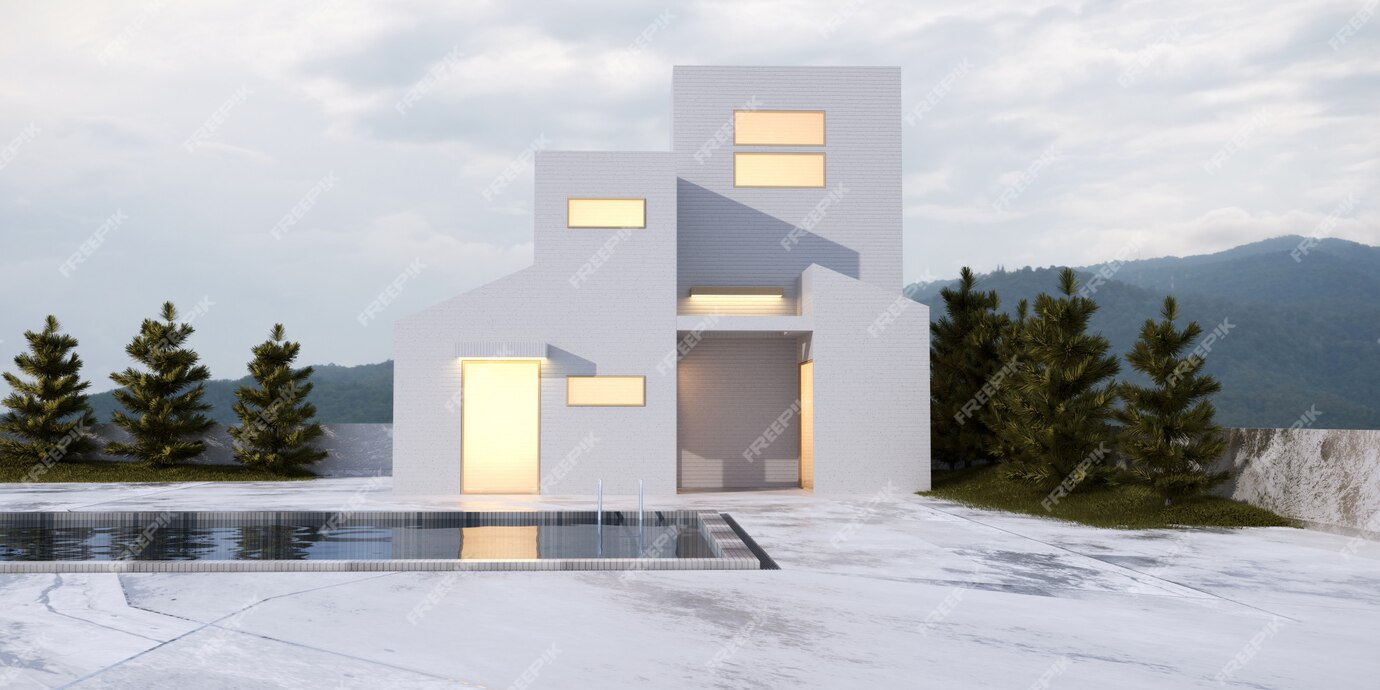Exterior:fm9f_Hkw0sg= Minimalist Home Design Here’s a detailed table and a 600-word explanation on minimalist home exterior design for FM9F_HKW0SG.
| Aspect | Description |
|---|---|
| Overall Aesthetic | Emphasizes simplicity, clean lines, and a reduction of unnecessary elements to create a cohesive and serene visual. The design avoids decorative embellishments, focusing instead on geometry and natural tones. |
| Materials Used | Common materials include concrete, wood, glass, and steel. Concrete provides a neutral, robust base, wood adds warmth, glass introduces light and visibility, and steel adds durability and modernity. |
| Color Palette | Neutral and earthy colors like white, gray, beige, and black dominate, reflecting a calm, natural atmosphere. Accents may include dark metals or natural wood finishes for contrast. |
| Facade Design | Typically features flat surfaces and large, unbroken walls with minimal trim. Windows are often large and frameless or have slim, unobtrusive frames to minimize visual distractions. |
| Windows & Openings | Large, floor-to-ceiling windows are common, offering expansive views and natural lighting while maintaining privacy with strategic placement. Some designs use mirrored or frosted glass for added privacy without sacrificing the minimalist look. |
| Roof Style | Flat or low-pitched roofs are preferred to maintain a streamlined, boxy appearance. They can also serve as eco-friendly living spaces with green roofs, solar panels, or roof gardens to integrate sustainability with design. |
| Landscaping | Landscaping is minimalist and often features native, drought-resistant plants. Simple gravel, stone paths, or manicured grass areas may surround the house, blending with the architecture to avoid overpowering the structure. |
| Entryway Design | The entryway is unobtrusive, blending into the facade. Often, it lacks a visible handle or uses a recessed entrance, creating a seamless look. Lighting is subtle, using recessed fixtures or hidden light strips for functionality without flashiness. |
| Outdoor Lighting | Outdoor lighting is minimal, with recessed ground lights or wall-mounted fixtures that emit warm, focused light without drawing excessive attention. Light placement prioritizes functionality and aesthetics, ensuring the design stays uncluttered and elegant. |
| Garage Design | If a garage is included, it’s usually integrated into the structure, often concealed with matching facade materials to create continuity. Modern minimalist homes might use automated, silent garage doors that blend seamlessly with the exterior. |
| Sustainability Features | Many minimalist designs incorporate sustainable elements like solar panels, rainwater harvesting, and energy-efficient windows to promote eco-friendliness without detracting from the aesthetic. |
| Privacy Features | Privacy is maintained through strategic positioning of walls, landscaping, and window placement, avoiding the need for additional privacy screens. Some homes may use narrow or clerestory windows to allow light in without exposing the interior to public view. |
| Balconies & Outdoor Spaces | If balconies are present, they have simple railings, often glass or metal, and are incorporated seamlessly into the structure. Outdoor spaces are designed to extend living areas, often with decks or patios that reflect the minimalist ethos. |
Explanation
A Minimalist Home exterior design, especially for a contemporary project like FM9F_HKW0SG, aims to embody simplicity, sophistication, and an intimate connection with the surrounding environment. This architectural style strips down the excess, focusing on function, form, and a tranquil aesthetic that supports a balanced lifestyle.

In terms of materials, minimalist exteriors lean toward a selective palette that emphasizes natural, robust materials like concrete, wood, and glass. Concrete provides a sturdy, neutral base, while wood adds an element of warmth without overpowering the structure’s simplicity. Glass is crucial in this design, offering both transparency and a conduit for natural light, a core aspect of minimalist architecture. Steel, often used for framing or small accents, reinforces the modern look, providing strength without excessive visual weight.
Color choice is key in minimalist exterior design, with a strong focus on neutral shades. Whites, grays, blacks, and beige tones dominate, creating a serene and cohesive palette. Occasionally, warm wood or muted metal accents provide contrast without disrupting the overall balance.
The facade design itself is streamlined, with large, unbroken walls that convey a sense of solidity and permanence. Windows, typically expansive and floor-to-ceiling, are positioned to maximize natural light and views, offering a strong connection between the indoor and outdoor spaces. However, these windows are often frameless or feature ultra-slim frames, allowing them to blend seamlessly with the walls.
The roof style in minimalist homes is generally flat or low-pitched, contributing to the boxy, geometric aesthetic characteristic of the style. This type of roof allows for practical additions like solar panels or green roofs, aligning with the sustainability values often integrated into minimalist designs.
Landscaping around a minimalist home is curated to avoid overpowering the structure. Plants are strategically chosen for their low maintenance and eco-friendly properties, frequently featuring native, drought-resistant species that enhance the home’s natural beauty.
In terms of entryway design, subtlety is paramount. A recessed or frameless door integrated directly into the facade creates a seamless and elegant entrance, often paired with understated lighting for functionality without flashiness. Similarly, outdoor lighting is subtle and focused, employing recessed ground lights or concealed fixtures to add warmth without drawing attention away from the structure.
Garages, if present, are meticulously integrated into the design, using the same materials and color as the main structure to maintain continuity. This approach conceals the garage from view, helping preserve the sleek, uninterrupted lines of the home.
Overall, the minimalist home exterior design achieves a refined yet functional aesthetic, emphasizing quality over quantity and fostering a harmonious connection with nature. Sustainable elements like energy-efficient windows, solar panels, and rainwater harvesting systems further enhance the practicality and environmental impact of the minimalist design, making it a popular choice for contemporary projects focused on simplicity, sustainability, and sophistication.

